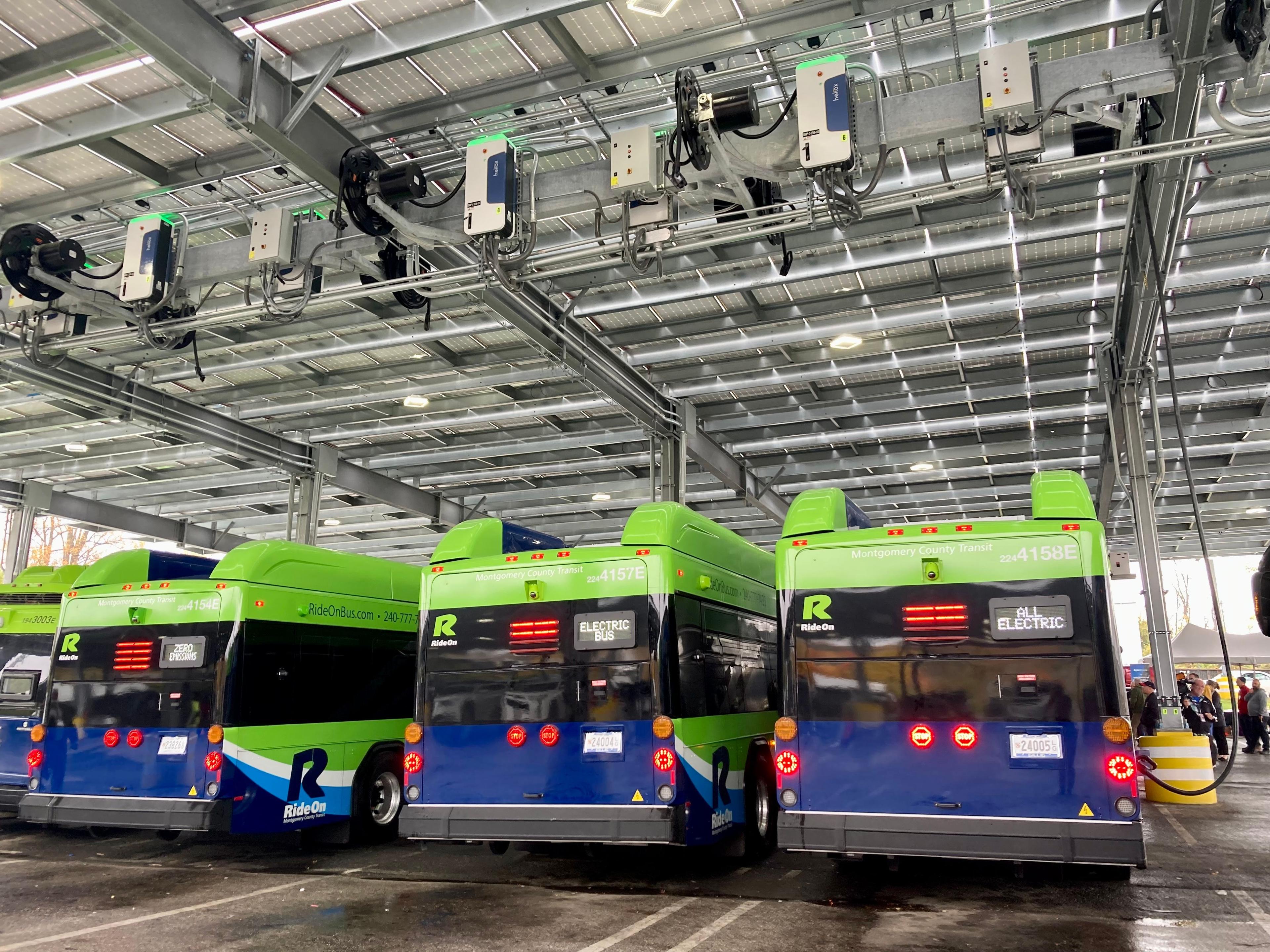As we experience more extreme weather such as unprecedented heat and flooding, transit agencies are increasingly feeling the challenge of providing reliable and safe service. At the same time, utilities are facing increased demand for additional power at large charging depots, and it will take time to develop the necessary infrastructure. An advanced charge management system (CMS) can increase your fleet’s resiliency to extreme climate impacts while also supporting increased charging power needs with limited on-site grid capacity.
Robust charge management includes software and hardware for maximum resilience
Charge management can help lower your peak load and electricity costs by prioritizing which vehicles to charge and how much power to provide based on each vehicle’s state of charge and intended time of departure. By choosing a CMS solution with an on-site hardware component, you can ensure a reliable connection to your charging stations and manage charging operations even if the system loses internet connection.
A charge management system can also perform Automated Load Management (ALM) which allows charging station nameplate capacity to exceed site power limitations. This allows your facility to install more charging equipment, potentially even exceeding the power of the local on-site utility infrastructure. An assessment of ALM potential as a standard part of site design and grid planning can mitigate the need for infrastructure upgrades, saving time, money, and materials, all of which are in short supply.
When choosing a resilient charge management system, it’s important the system includes the following components:
- A local controller and connections installed in a weatherproof container to control EV charging processes;
- The ability to continue ALM EV charging if internet connectivity is disrupted;
- Connections to on-site charging stations via ethernet interface (physical cables); and
- A connection between the local controller and the backend by either local internet or cellular.
Without these features, it is easier to enter an error state where your fleet’s charging is affected. This could mean the system would have to throttle down charging power to a minimal level or even completely stop all charging until internet connectivity is restored. In a worst-case scenario, if you have an entirely cloud-based system performing ALM, you could accidentally exceed your site’s grid limit and thereby trip the circuit protection on-site.
Bidirectional charging brings new opportunities for transit to provide community resilience
Bidirectional charging allows resilient EV fleets to support their communities through the continuation of service, stabilizing the grid, or acting as a power source for emergency shelter locations. When energy demand spikes during extreme heat or cold, transit agencies can give energy back to the grid. Additionally, electric transit buses can provide energy to a community center used as a shelter during emergencies.
When purchasing charging stations, consider bidirectional charging capabilities or ask the manufacturer about their plans to incorporate bidirectional charging in the future. Check out this article to learn more about why vehicle-to-everything makes sense for transit agencies.
Microgrid and solar integration
Microgrids and solar generation can provide additional power to your site when demand from the grid is high and electricity is expensive. Depending on your system design and local utility regulations, microgrids can also provide power during grid outages. Solar generation can help your fleet reduce carbon emissions by using solar energy to charge your electric fleet. Additionally, solar generation can potentially increase the power available to the charging stations. Your CMS solution should be able to integrate with third party systems to work with distributed energy resources, ideally using open architecture and protocols such as Modbus.
The Mobility House is proud to support the resilience of transit agencies across North America. Please see below for examples of our projects providing resiliency benefits to fleets across the United States:
- The Mobility House Manages Charging for Microgrid-Powered EV Bus Fleet at Brookville Smart Energy Bus Depot
- The Mobility House helps deploy electric transit buses as mobile emergency backup power for community centers
- With vehicle-to-grid, NYCSBUS and The Mobility House are testing an important future technology for electromobility and the energy transition in general in another project in New York City.

